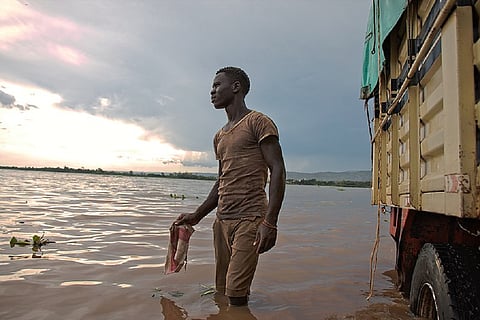

Lake Victoria — one of the world’s largest lakes spanning three African countries — is under severe pressure and threatened by various unsustainable human activities. An India-based think tank Centre for Science and Environment and National Environment Management Council (NEMC), Tanzania, have come out with a management strategy to clean the lake and sustain its ecological integrity.
CSE and NEMC released the research paper and analysis in Dar es Salaam, Tanzania July 13, 2022. The report laid a roadmap for a strategy aimed at improving the water quality of Lake Victoria and making its use sustainable.
The paper focused on the environmental problems the lake faces.
Lake Victoria and its flora and fauna support the livelihoods of about 45 million people. The researchers found that the fragile ecosystem could be damaged irreversibly in the absence of appropriate interventions.
The strategy was released after a joint meeting by CSE and NEMC in Mwanza, along with other stakeholders.
A holistic approach was needed towards improving the water body’s health, said CSE Director General Sunita Narain.
“The approach should include aspects like management of the existing wetlands, developing waste management practices and pollution control systems along with continuous monitoring of water bodies entering the lake,” she said.
The proposed strategy will assist NEMC, Lake Victoria Basin Water Board, Tanzanian Fisheries Research Institute, local authorities and other conservationists in developing a broad-based understanding of the water quality in the lake, said Dr MenanJangu, director of research at NEMC.
Narain said the primary step was identifying and mapping the rivers, streams and drains that join the lake.
A long-term environmental strategy would include adopting different approaches to treating industrial discharge and scientifically disposing of sewage and solid waste.
In its next phase, the strategy would try to ensure that all streams and tributaries entering Lake Victoria are monitored regularly for key parameters. The collected data will guide on the informed decision in the management programmes of the Lake Victoria basin.
The stakeholders’ round table held in Mwanza focussed on understanding the pollution potential of each source and the remedial measures, said Nivit Kumar Yadav, programme director, industrial pollution in CSE.
“Considering the extent of pollution, Mwanza was selected for introducing pollution control measures that could later be replicated in other hotspots,” he said.
Analysis of existing data identified rivers like Mirongo and Nyashishias discharge a significant pollution load into the lake. These rivers are the recipients of discharged effluents from municipal and industrial activities.
A CSE monitoring and research team headed by Narain was in Tanzania to coordinate with NEMC’s Director General, Samuel G Mafwenga.
Another meeting by CSE and NEMC in Dar es Salaam on July 14-15 will discuss strengthening the Environment Impact Assessment (EIA) process pan-Africa.